R.J. Stowell's Blog: rjsomeone, page 48
March 21, 2019
Miles From Nowhere
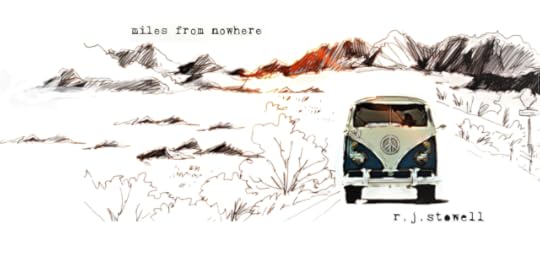 Miles From Nowhere, which is, of course, a novel about Woodstock and not Monterey, is now available on Amazon, and for your Kindle! We've tried to keep the price affordable and so we've arranged for you to read the novel on Kindle Unlimited for free, order the Kindle version for $2.99 or the softbound copy for $10.99. Miles From Nowhere is a rock 'n' roll pilgrimage, the journey of a young man in poor health as he travels from California to Woodstock to see his idol, Jimi Hendrix. Along the way he meets friends and family, an entourage of hippies and bohemians, musicians and socialites; every time you put the novel down you'll have another familiar song in your head.
Miles From Nowhere, which is, of course, a novel about Woodstock and not Monterey, is now available on Amazon, and for your Kindle! We've tried to keep the price affordable and so we've arranged for you to read the novel on Kindle Unlimited for free, order the Kindle version for $2.99 or the softbound copy for $10.99. Miles From Nowhere is a rock 'n' roll pilgrimage, the journey of a young man in poor health as he travels from California to Woodstock to see his idol, Jimi Hendrix. Along the way he meets friends and family, an entourage of hippies and bohemians, musicians and socialites; every time you put the novel down you'll have another familiar song in your head. Order your copy of Miles From Nowhere on Amazon or click the links in the sidebar. (In some markets, availability may be delayed a few days.)
Published on March 21, 2019 14:23
March 20, 2019
Monterey
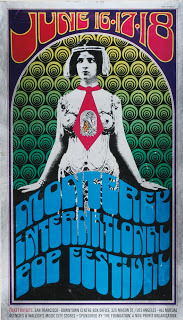 Obviously it wasn't only Townshend who was mesmerized by Hendrix. Keith Altham of NME said of Brian Jones, "[He was] walking back up the stairs with tears in his eyes. I said, 'Brian, what is it?' and he replied, 'It's what he does, it chokes me' – only he put it better than that." It was on that night at the Bag O' Nails that Jimi was first converged upon by Britain's rock elite (Paul McCartney, John Lennon, Keith Richards, Mick Jagger, Pete Townshend and Eric Clapton). On a night to follow, Cream allowed Jimi to jam with them at the Regent Street Polytechnic in London. The story goes that meeting Clapton was one of the reasons Hendrix was lured to Britain. Hendrix played Howling Wolf's "Killing Floor" (which would inspire Led Zeppelin's "The Lemon Song"). Afterwards, Clapton is reported as sitting back stage nervously smoking a cigarette. He told Chas Chandler (Jimi's manager and former bassist for The Animals), "You never told me he was that fucking good."
Obviously it wasn't only Townshend who was mesmerized by Hendrix. Keith Altham of NME said of Brian Jones, "[He was] walking back up the stairs with tears in his eyes. I said, 'Brian, what is it?' and he replied, 'It's what he does, it chokes me' – only he put it better than that." It was on that night at the Bag O' Nails that Jimi was first converged upon by Britain's rock elite (Paul McCartney, John Lennon, Keith Richards, Mick Jagger, Pete Townshend and Eric Clapton). On a night to follow, Cream allowed Jimi to jam with them at the Regent Street Polytechnic in London. The story goes that meeting Clapton was one of the reasons Hendrix was lured to Britain. Hendrix played Howling Wolf's "Killing Floor" (which would inspire Led Zeppelin's "The Lemon Song"). Afterwards, Clapton is reported as sitting back stage nervously smoking a cigarette. He told Chas Chandler (Jimi's manager and former bassist for The Animals), "You never told me he was that fucking good."But it was Townshend who took it to heart. Oddly, while Hendrix regularly tops polls, including Rolling Stone's, the top five historically excludes Townshend, preferring instead Page, Clapton, Richards and Jeff Beck, with Townshend relegated to the teens. Though I find issue with that, polls are absurd anyway. Interestingly guitar virtuosi like Steve Howe rarely make the list, not to mention David Gilmour, Les Paul or played-with-everyone/Wrecking Crew member, Glen Campbell. Townshend found himself on par with Hendrix (no one argues Jimi's topping the list, but many guitarists could play on that same stage) and realized that Jimi, in turn, idolized guitarists like himself and Clapton, studied their styles and created out of that a style of his own. Nonetheless, it all came to a head fifty years ago at Monterey Pop.
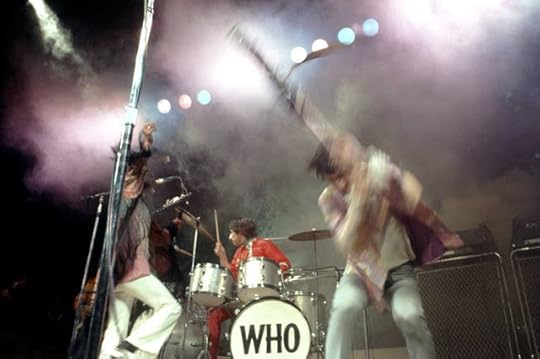 Monterey was organized by John Phillips of the Mamas and the Papas and The Beatles' press manager, Derek Taylor, along with Lou Adler. They pledged that the concert's profit be earmarked for charity. All agreed (with the exception of Ravi Shankar who got $3000 for his performance). The Who, who had hardly entered the American airwaves jumped at the chance to perform. Other acts on the bill of course were (long list) Country Joe And The Fish, Jefferson Airplane, Scott McKenzie (whose hit San Francisco was the festival’s and ‘the summer of love’ theme song), The Byrds, The Association, Johnny Rivers, The Animals, Simon and Garfunkel, Canned Heat, Janis Joplin (with Big Brother), Al Kooper, Quicksilver, Moby Grape, Otis Redding – on and on (with performances by those who would attend Woodstock, stellar in comparison).
Monterey was organized by John Phillips of the Mamas and the Papas and The Beatles' press manager, Derek Taylor, along with Lou Adler. They pledged that the concert's profit be earmarked for charity. All agreed (with the exception of Ravi Shankar who got $3000 for his performance). The Who, who had hardly entered the American airwaves jumped at the chance to perform. Other acts on the bill of course were (long list) Country Joe And The Fish, Jefferson Airplane, Scott McKenzie (whose hit San Francisco was the festival’s and ‘the summer of love’ theme song), The Byrds, The Association, Johnny Rivers, The Animals, Simon and Garfunkel, Canned Heat, Janis Joplin (with Big Brother), Al Kooper, Quicksilver, Moby Grape, Otis Redding – on and on (with performances by those who would attend Woodstock, stellar in comparison).  The Who and Hendrix were both scheduled to play Sunday evening. By then, as many 80,000 people had passed through the gates that day (200,000 over the weekend). Backstage, the Grateful Dead's sound engineer turned chemist, Owsley Stanley, was distributing free LSD trips and Rolling Stone Brian Jones was drifting around dressed like Prince Valiant, but looking, as Keith Richards once said, "like a ghost about to leave a séance." Roger Daltrey recalls Jones joining him, Janis Joplin, Mama Cass and Jimi Hendrix for a jam session back stage. "Jimi was playing Sgt. Pepper on his guitar," said Daltrey. "But, and this was the amazing thing, he was playing all the parts. He would go from a bit of orchestration, to a vocal part, to a solo – the whole thing on one guitar." The others stood and watched, accompanying Hendrix by beating out a rhythm on anything close to hand.
The Who and Hendrix were both scheduled to play Sunday evening. By then, as many 80,000 people had passed through the gates that day (200,000 over the weekend). Backstage, the Grateful Dead's sound engineer turned chemist, Owsley Stanley, was distributing free LSD trips and Rolling Stone Brian Jones was drifting around dressed like Prince Valiant, but looking, as Keith Richards once said, "like a ghost about to leave a séance." Roger Daltrey recalls Jones joining him, Janis Joplin, Mama Cass and Jimi Hendrix for a jam session back stage. "Jimi was playing Sgt. Pepper on his guitar," said Daltrey. "But, and this was the amazing thing, he was playing all the parts. He would go from a bit of orchestration, to a vocal part, to a solo – the whole thing on one guitar." The others stood and watched, accompanying Hendrix by beating out a rhythm on anything close to hand.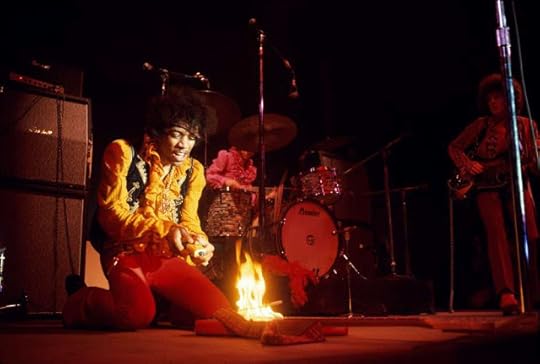 Pete Townshend recalled arguing with Hendrix about who would go on first, as neither wanted to follow the other. In the end, John Phillips suggested they toss a coin. Townshend won. Eric Burdon of The Animals, introduced The Who as "a group that will destroy you completely in more ways than one." The Who crashed into "Substitute," followed by "Summertime Blues," pretty far removed from The Mamas And Papas' passive Hippie stance or anything else played that weekend.The Who tore through just six songs, "Pictures Of Lily," "A Quick One," "While He's Away," "Happy Jack," and "My Generation." Instead of peace, love and flowers, they offered masturbation, pervert train drivers, adolescent turmoil, and Pete Townshend hacking away at the stage with his guitar. Ravi Shankar watched the performance and was disgusted by "their lack of respect for their music and their instruments."
Pete Townshend recalled arguing with Hendrix about who would go on first, as neither wanted to follow the other. In the end, John Phillips suggested they toss a coin. Townshend won. Eric Burdon of The Animals, introduced The Who as "a group that will destroy you completely in more ways than one." The Who crashed into "Substitute," followed by "Summertime Blues," pretty far removed from The Mamas And Papas' passive Hippie stance or anything else played that weekend.The Who tore through just six songs, "Pictures Of Lily," "A Quick One," "While He's Away," "Happy Jack," and "My Generation." Instead of peace, love and flowers, they offered masturbation, pervert train drivers, adolescent turmoil, and Pete Townshend hacking away at the stage with his guitar. Ravi Shankar watched the performance and was disgusted by "their lack of respect for their music and their instruments."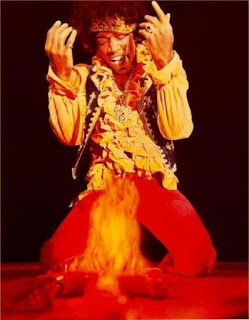
The heated animosity between the two musicians if often debated. I have presented it as a Beach Boys/Beatles rivalry, each band pushing the other onto the next level. While that feud artistically civil, many report that Townshend and Hendrix were near socking it out in Monterey. Lou Adler stated that at one point in between sets Hendrix jumped up on a table and said, "OK, you little shit, no matter what you do, I'll do something that burns you."
Brian Jones introduced Hendrix as "the most exciting guitarist I've ever heard." Having already witnessed The Who's explosive finale, Hendrix capped his set with a version of "Wild Thing," kneeling over his guitar and setting it on fire before smashing it repeatedly and tossing the remains into the crowd. Townshend watched Hendrix’s set with Mama Cass: "He started doing this stuff with his guitar," Townshend said. "She turned around to me, and said to me, 'He's stealing your act.' And I said, 'No, he's doing my act.'"
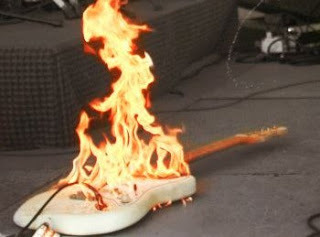 Monterey is a tough critique simply because, so much more than Woodstock, there were many pivotal performances. Janis Joplin's most emotional rendition of "Ball and Chain," Otis Redding's last concert appearance before his untimely death, The Who and Jimi. While Woodstock was all about those in attendance, about the mud and the camaraderie, Monterey was about the Music. Townshend and Hendrix pushed each other, both literally and figuratively, and rock music would never be the same.
Monterey is a tough critique simply because, so much more than Woodstock, there were many pivotal performances. Janis Joplin's most emotional rendition of "Ball and Chain," Otis Redding's last concert appearance before his untimely death, The Who and Jimi. While Woodstock was all about those in attendance, about the mud and the camaraderie, Monterey was about the Music. Townshend and Hendrix pushed each other, both literally and figuratively, and rock music would never be the same.
Published on March 20, 2019 16:20
March 15, 2019
Summer of Love and Monterey Pop
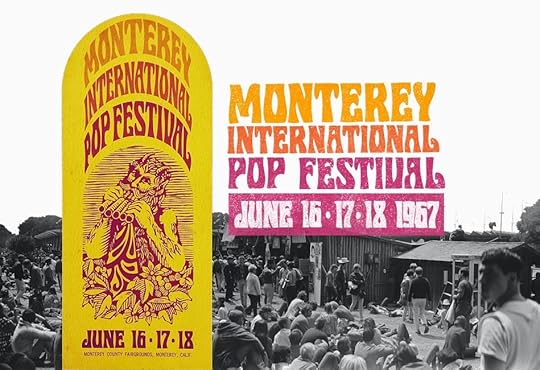 By the time we got to Woodstock... Hendrix, Janis Joplin, the Who and the Grateful Dead were demigods to the half-mil who rambled onto Yasgur's farm in the summer of '69; two years earlier, each was unknown.
By the time we got to Woodstock... Hendrix, Janis Joplin, the Who and the Grateful Dead were demigods to the half-mil who rambled onto Yasgur's farm in the summer of '69; two years earlier, each was unknown. Held over three days during and kicking off the Summer of Love, the Monterey International Pop Festival (Music, Love and Flowers) featured what is now a historic lineup of performers that also included Ravi Shankar, Buffalo Springfield, The Association, Jefferson Airplane, Otis Redding, The Byrds and the Mama's and the Papa's. Monterey was a groundbreaking event, bringing together an eclectic mix of styles and sounds, and, in three days, launching the careers of a gazillion iconic players. The festival not only pioneered the idea of the multi-day rock festival, it provided the creative template that music festivals follow today, from Firefly to Coachella. Over 200,000 attended the concert organized by Papa John Phillips, who even wrote a theme song for the event, Scott McKenzie's "San Francisco (Be Sure to Wear Flowers in Your Hair)." It wasn't a corporate thing, it wasn't an Acid Test, Monterey was a legit rock event.
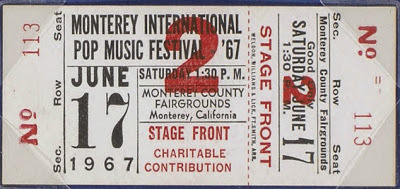 Concert Producer Lou Adler recalled the initial conversation: "It was me, John Phillips, Cass Elliot and Paul McCartney, and we were all talking about the fact that rock 'n' roll wasn't considered an art form, like jazz and the blues. John and I had both heard that in the late 30s, the series Jazz at the Philharmonic had validated jazz to people, so we thought putting rock music at the site of the already established Monterey Jazz Festival would validate rock." And validate it it did. Everything that could go right, did – from the weather (perfect, you know…California) to the music (luminescent) to the throngs of people, young and old ; it was all – the Be-ins, the Love-ins, the Acid Tests – culminating right there in Monterey. Unlike Woodstock, which would follow (without the meticulous planning), Monterey was a true festival with the feel of a Renaissance Fair or a community get together.
Concert Producer Lou Adler recalled the initial conversation: "It was me, John Phillips, Cass Elliot and Paul McCartney, and we were all talking about the fact that rock 'n' roll wasn't considered an art form, like jazz and the blues. John and I had both heard that in the late 30s, the series Jazz at the Philharmonic had validated jazz to people, so we thought putting rock music at the site of the already established Monterey Jazz Festival would validate rock." And validate it it did. Everything that could go right, did – from the weather (perfect, you know…California) to the music (luminescent) to the throngs of people, young and old ; it was all – the Be-ins, the Love-ins, the Acid Tests – culminating right there in Monterey. Unlike Woodstock, which would follow (without the meticulous planning), Monterey was a true festival with the feel of a Renaissance Fair or a community get together.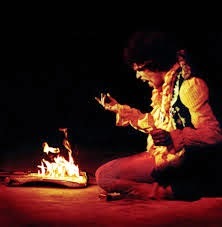 Woodstock certainly gets more press, but Monterey was where it began: Janis and "Ball and Chain," Jimi making love to, then lighting his Stratocaster on fire, Pete Townshend smashing his guitars. Indeed, Townshend originated the concept of pyrotechnic stagecraft. Close friend Hendrix quickly began mimicking the explosive routine on stage, destroying his guitars to elicit the feedback. The copycatting simultaneously delighted and infuriated Townshend. At Monterey, as Jimi smashed his gear round the stage, Cass Elliot lashed out. "Hey, destroying guitars is your thing!" she yelled to Townshend. "It used to be," he shouted back, "It belongs to Jimi now."
Woodstock certainly gets more press, but Monterey was where it began: Janis and "Ball and Chain," Jimi making love to, then lighting his Stratocaster on fire, Pete Townshend smashing his guitars. Indeed, Townshend originated the concept of pyrotechnic stagecraft. Close friend Hendrix quickly began mimicking the explosive routine on stage, destroying his guitars to elicit the feedback. The copycatting simultaneously delighted and infuriated Townshend. At Monterey, as Jimi smashed his gear round the stage, Cass Elliot lashed out. "Hey, destroying guitars is your thing!" she yelled to Townshend. "It used to be," he shouted back, "It belongs to Jimi now."  Brian Jones"No one had ever heard anything like it," said John Phillips. Grace Slick in her memoir, Somebody to Love, said, "I watched him play guitar with his teeth, use the mic stand for a slide guitar, bang into speakers for feedback, set his guitar on fire... And the fabulous outfit! He wore a perfect 60s costume: Spanish hat, Mongol vest, silk ruffled paisley shirt, pounds of handmade jewelry, and western boots. If any musician represented the era, it was Jimi Hendrix." Hendrix was introduced by The Rolling Stones' Brian Jones. It was his last public appearance. Immortalized in song by the Animals ("Monterey"), Eric Burdon sings, "His Majesty, Prince Jones/ Smiled as he moved among the crowd."
Brian Jones"No one had ever heard anything like it," said John Phillips. Grace Slick in her memoir, Somebody to Love, said, "I watched him play guitar with his teeth, use the mic stand for a slide guitar, bang into speakers for feedback, set his guitar on fire... And the fabulous outfit! He wore a perfect 60s costume: Spanish hat, Mongol vest, silk ruffled paisley shirt, pounds of handmade jewelry, and western boots. If any musician represented the era, it was Jimi Hendrix." Hendrix was introduced by The Rolling Stones' Brian Jones. It was his last public appearance. Immortalized in song by the Animals ("Monterey"), Eric Burdon sings, "His Majesty, Prince Jones/ Smiled as he moved among the crowd."
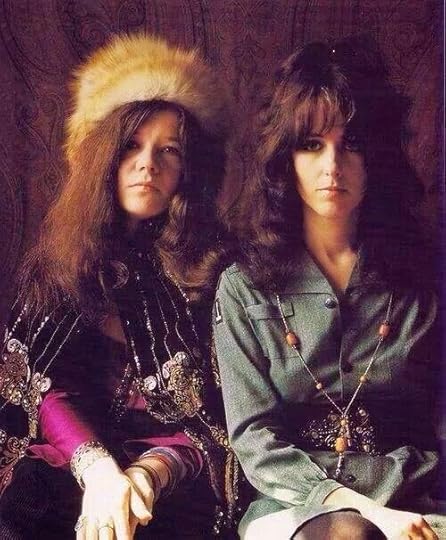 Janis and Grace Slick
Janis and Grace SlickThe list of performers was only outweighed by those who declined or were overlooked: The Beatles, The Beach Boys, Cream, The Kinks and The Doors (who purportedly didn't meet the theme of Music, Love and Flowers).
Monterey was the rock equivalent of a Royal gathering; for fans of rock 'n' roll, there is no other weekend that compares to the events that took place simultaneously in Monterey; not the Beatles at the Hollywood Bowl; not the Doors at the Whiskey; not even big brother Woodstock - Monterey was the jam.
A codicil: While Monterey Pop can be considered the first rock festival, it can clearly be argued that the 1966 Windsor Jazz Blues Festival, despite the name, superceded Monterey by nearly a year. Indeed, Jazz artists by this time in the festival's history were far and in-between. The rock line-up instead was nearly as impressive as Pop: The Small Faces, The Who, The Yardbirds and Cream led the way, with Cream, yet to have the name, and billed as Eric Clapton - Jack Bruce - Ginger Baker.
Published on March 15, 2019 04:45
March 12, 2019
Fantasy Fair and Magic Mountain Music Festival
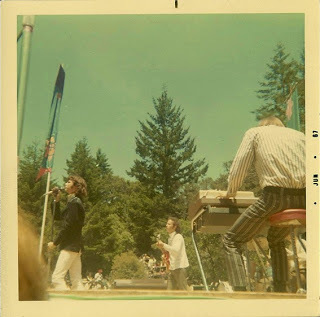 The DoorsRevisionists will insist that Betsy Ross had nothing to do with anything, that Malcolm X was a compassionate humanitarian, and that Monterey Pop was not the first of the great rock festivals. Instead, despite the fact that it has slipped the collective mind, and to appease the contrarians, let the record show that the KFRC Fantasy Fair and Magic Mountain Music Festival was held June 10th and 11th, 1967 at the Sidney B. Cushing Memorial Amphitheatre, high on the south face of Mount Tamalpais, Marin County, California, two full weeks before Monterey. Kicking off the Summer of Love, 36,000 people attended Fantasy Fair, the two-day concert and festival influenced by the popular Renaissance Pleasure Faire. Admission to the festival was a measly two bucks and all proceeds were donated to the Hunters Point Child Care Center in San Francisco. Fantasy Fair was originally scheduled for June 3rd and 4th, but was delayed due to inclement weather.
The DoorsRevisionists will insist that Betsy Ross had nothing to do with anything, that Malcolm X was a compassionate humanitarian, and that Monterey Pop was not the first of the great rock festivals. Instead, despite the fact that it has slipped the collective mind, and to appease the contrarians, let the record show that the KFRC Fantasy Fair and Magic Mountain Music Festival was held June 10th and 11th, 1967 at the Sidney B. Cushing Memorial Amphitheatre, high on the south face of Mount Tamalpais, Marin County, California, two full weeks before Monterey. Kicking off the Summer of Love, 36,000 people attended Fantasy Fair, the two-day concert and festival influenced by the popular Renaissance Pleasure Faire. Admission to the festival was a measly two bucks and all proceeds were donated to the Hunters Point Child Care Center in San Francisco. Fantasy Fair was originally scheduled for June 3rd and 4th, but was delayed due to inclement weather.
 Morrison
MorrisonLet it be known that nothing occurs in a vacuum and Fantasy Fair was the first of modern rock festivals (unless one includes [insert venue/event here]. Indeed it was a major and evolutionary gathering that featured The Doors, The Byrds, Jefferson Airplane, Canned Heat, Spanky and Our Gang, Captain Beefheart, The Seeds, The Grass Roots, Tim Buckley, Country Joe and the Fish and The 5th Dimension. [Several acts booked for the original dates were unable to perform, including the 13th Floor Elevators and Smoky Robinson.] The moral of the story, '67 was indeed sublime.
Admission to the festival was $2 and all proceeds were donated to nearby Hunter's Point Child Care Center in San Francisco. The Festival was originally scheduled for June 3rd and 4th but was rescheduled due to inclement weather. After enjoying a scenic ride up the mountain from points such as the Marin Civic Center and Mill Valley, a giant Buddha balloon greeted attendees when they arrived. Transportation was provided by "Trans Love Bus Lines."
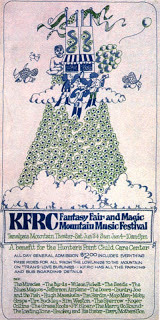 The Official Program copy read: "A Benefit for the Hunters Point Child Care Centers - A gathering of beautiful things, created and collected by the artisians and craftsmen of Northern California, and represented by the exhibitors listed on the Fantasy Fair Map - a variety of "happenings." When you arrive at the Fantasy Fair, you will immediately surrounded by color and motion, the good vibrations of thousands of people flowing with the natural beauty of Mt. Tamalpais. The major happening is you, your feeling of good will, and your knowledge that the Fair and the Mountain are a part of you, therefore yours to enjoy. The woods and meadows are an open invitation to wander and enjoy yourself to the limits of your imagination. And because they are yours to enjoy, we hope that you will grove with the surroundings, doing everything you can to keep them in their natural state - For your enjoyment, The Fantasy Fair staff has prepared the Geodesic Dome Light Chamber. The Dome can accomadate 150 people per 8 minute show. We invite your participation in the wonders of the Dome, and ask that at the end of each show, you move out to make room for others waiting on line. You are also invited to enloy the giant slide, the tree swings (on the way to the valley of dancing), the vast assortment of strolling or sitting musicians (find many of them under trees or rocks), and other suprises prepared by Fantasy Fair volunteers for your pleasure and participation - Music will be performed hourly in the Amphitheatre from 8am until 6pm. We ask that after each performance the seats be cleared to make way for people that may be waiting for the next performance- The Fantasy Fair wishes to express extreme gratitude to the artists in the performing groups, who have graciously donated their valuable time and exceptional talents, and all the bands performing in the Valley of Dancing.
The Official Program copy read: "A Benefit for the Hunters Point Child Care Centers - A gathering of beautiful things, created and collected by the artisians and craftsmen of Northern California, and represented by the exhibitors listed on the Fantasy Fair Map - a variety of "happenings." When you arrive at the Fantasy Fair, you will immediately surrounded by color and motion, the good vibrations of thousands of people flowing with the natural beauty of Mt. Tamalpais. The major happening is you, your feeling of good will, and your knowledge that the Fair and the Mountain are a part of you, therefore yours to enjoy. The woods and meadows are an open invitation to wander and enjoy yourself to the limits of your imagination. And because they are yours to enjoy, we hope that you will grove with the surroundings, doing everything you can to keep them in their natural state - For your enjoyment, The Fantasy Fair staff has prepared the Geodesic Dome Light Chamber. The Dome can accomadate 150 people per 8 minute show. We invite your participation in the wonders of the Dome, and ask that at the end of each show, you move out to make room for others waiting on line. You are also invited to enloy the giant slide, the tree swings (on the way to the valley of dancing), the vast assortment of strolling or sitting musicians (find many of them under trees or rocks), and other suprises prepared by Fantasy Fair volunteers for your pleasure and participation - Music will be performed hourly in the Amphitheatre from 8am until 6pm. We ask that after each performance the seats be cleared to make way for people that may be waiting for the next performance- The Fantasy Fair wishes to express extreme gratitude to the artists in the performing groups, who have graciously donated their valuable time and exceptional talents, and all the bands performing in the Valley of Dancing.Those of you who have read Jay and the Americans know that I got lost amongst the crowd on the Magic Mountain. I was nine years old, a fledgling hippie.
Jay and the Americans is available all over the world!
Buy Your Copy Today! Click the link below.
CreateSpace - Amazon - Amazon UK - Amazon France - Amazon Russia

Published on March 12, 2019 02:15
March 11, 2019
On Woodstock
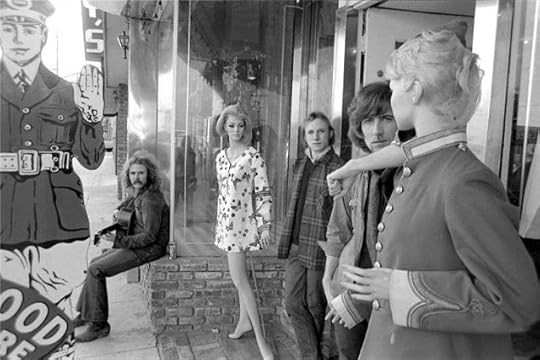 Graham Nash: When David, Stephen and I flew out to The Hamptons for our first serious Crosby Stills & Nash rehearsals, we rented a wooden chalet by the lake and invoked the "no women" rule. We were finally free from our previous bands.
Graham Nash: When David, Stephen and I flew out to The Hamptons for our first serious Crosby Stills & Nash rehearsals, we rented a wooden chalet by the lake and invoked the "no women" rule. We were finally free from our previous bands.We had a hell of a time, cementing our friendship, getting wasted, working up the first CSN album – three hippies wired to their eyeballs in a snowbound cabin for a month. We recruited Stills's old bandmate Neil Young as our fourth member and played our first show in Chicago. Now, I know a few things about crazy tours.
At our height, the Hollies' shows had been insane: wall-to-wall teenage girls, screaming their heads off in a sexual frenzy at these young, good-looking guys playing loud rock 'n' roll.At one of our shows in Glasgow, '75, girls fainted during the Hollies' set and had to be passed hand-over-head, like in a mosh pit.
Some of those gigs had an eerie, war-zone quality. If a chick took a shine to the lead singer, you could bet he was going to get his ass kicked by her boyfriend and his pals after the show. I can't tell you how many buses I ran for after concerts. One time, I got three front teeth shattered.
Woodstock, however, was something else. We heard it was going to be monumental, transformative, a cultural flashpoint. As the festival approached, rumours told of 100,000 people there, then 200,000. By the time we headed to New Jersey to catch a helicopter on the Sunday evening, they were calling it a disaster, a revolution; they were calling out the National Guard.
We flew up along the Hudson River, and then it came into view. David said it was like flying over an encampment of the Macedonian army. It was more than a city of people – it was tribal. Fires were burning, smoke was rising, a sea of hippies clustered together, shoulder to shoulder, hundreds of thousands of them.
John Sebastian of the Lovin' Spoonful met us. We went straight to his tent at the right-hand side of the stage and got incredibly wasted. It was such a tumultuous, smoke-ridden moment that it's hard to remember everything as it went down, but we played for an hour and we could hardly hear ourselves.
The sound of the audience was enormous, their energy thrumming like an engine. We only knew we had done well. We could sense it. As we left, Jimi Hendrix was launching into The Star-Spangled Banner.
There’s no doubt CSNY were a political band. We were flame-throwers in the best democratic sense. We recorded Neil's song "Ohio" in response to the 1970 Kent State University shooting of four American students by National Guardsmen, and we put it out within two weeks. It was us at our best: town criers, saying, "It's 12 o'clock and all is not well."
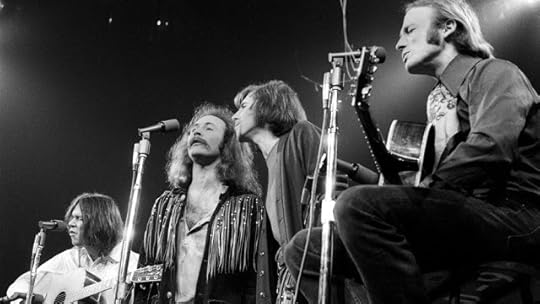
David Crosby: I saw this girl. She was a blonde girl, pretty, short dress, good legs and she was walking in the mud barefoot. She cut her foot on a piece of glass in the mud and she was really bleeding. She was definitely really hurt. I saw this guy who was a New York State cop, and I noticed his shoes were polished and shiny. He looked at the girl and without any hesitation at all, walked right over to her into the mud and picked her up. He got the blood and mud all over himself while he carried her all the way to his car. He gently laid her down, showing care and compassion, and put her into his car to take her over to a doctor or somewhere she could get care. Fifteen hippies saw this and stepped forward to push that police cruiser out of the mud, to make sure she would reach the doctor as fast as possible. This is how it's supposed to be.
A thing happened at Woodstock where people were nice to each other, it was real. It was there, you could taste it and you could feel it all around you. There was a generosity of spirit to each other. That's what Woodstock was about, really. It wasn’t about half a million people, it wasn’t about naked kids in the mud. It was about the spirit of humans being nice to each other for once.
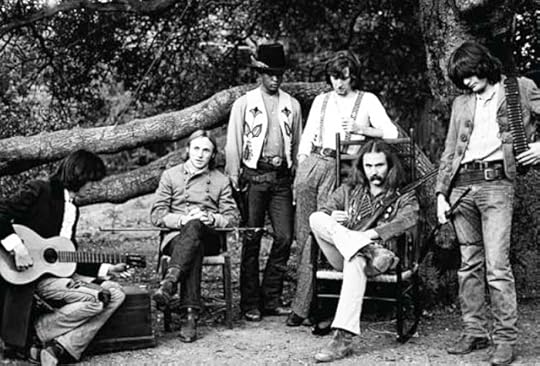
Neil Young: It was like a migration – I don’t know what to compare it to. We thought it was the first time we’d seen the group of people that we kind of knew, that we met around the country – the heads, the hippies, whatever – the first time that we’d seen them all come into one area and you could feel the strength of the numbers. But corporate America was watching too. And it was a lot of confused traveling, nervous people, a lot of different people going back and forth and kind of on-the-spot plans being made.We were nervous- it was like our second show or something – and I was especially nervous because I didn’t know the rhythm section that well and we really didn’t have that much of a groove. I didn't allow myself to be filmed because I didn’t want them on the stage. Because we were playing music – get away, don't be in my way, I don’t want to see your cameras. I don’t want to see you. To me it was a distraction from making music, and music is something you listen to, not that you look at. So you're there, trying to get lost in the music, and there's this dickhead with a camera in your face. So the only way to make sure that wouldn’t happen is to tell them I wouldn’t be in the film so avoid me, stay away from my area. And that worked.Hendrix is the best, nobody can touch him. I’m a hack compared to him, a hack. That guy — it slipped off his hands, he couldn't help himself.
Stephen Stills: This is the second time we've ever played in front of people, man; we're scared shitless.
Published on March 11, 2019 04:31
March 7, 2019
The Beginning of the End
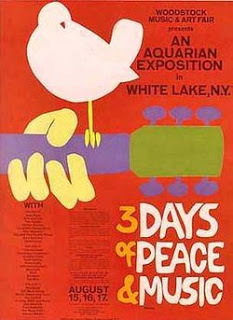 By January 1969, the Beatles had almost completely fallen apart. The concept of Let It Be was to record the Beatles writing and practicing new songs that would then become an album of new material as a soundtrack to a film about the recording of new music. (I wrote that sentence and realized that what I had written was as convoluted as the concept itself.) It's easy to see why things went awry. We've talked in the past about when George Harrison left the Beatles after a particularly uncomfortable row with Paul McCartney on how Harrison should play the guitar for "Hey Jude." As the conversation deteriorates with Paul essentially bullying Harrison, George responds that he'll play it however Paul wants him to and goes on to say that if Paul doesn't want him to play at all, he's fine with that as well. While the content itself of the conversation isn't enough to suggest that George quit the band the exasperation in Harrison's demeanor is such that we know. You could see it in George's diary as well, a tome full of relatively sparse pages with scribbles in pink ink on each page. January 9: "Went to Twickenham." January 10: "Got up, went to Twickenham. Rehearsed until lunchtime – left the Beatles." The next day, George wrote "Wah-wah" for the All Things Must Pass LP. And here's an interesting aside. John suggested at that point that Eric Clapton take George's place in the band. What an incredible concept. Keep in mind that at Clapton had been in Cream and then the Yardbirds, that this was before Derek & The Dominos and any of the solo LPs. I think again about Eric's blues background and the avenues that the Beatles may have explored with Clapton's bluesy past.
By January 1969, the Beatles had almost completely fallen apart. The concept of Let It Be was to record the Beatles writing and practicing new songs that would then become an album of new material as a soundtrack to a film about the recording of new music. (I wrote that sentence and realized that what I had written was as convoluted as the concept itself.) It's easy to see why things went awry. We've talked in the past about when George Harrison left the Beatles after a particularly uncomfortable row with Paul McCartney on how Harrison should play the guitar for "Hey Jude." As the conversation deteriorates with Paul essentially bullying Harrison, George responds that he'll play it however Paul wants him to and goes on to say that if Paul doesn't want him to play at all, he's fine with that as well. While the content itself of the conversation isn't enough to suggest that George quit the band the exasperation in Harrison's demeanor is such that we know. You could see it in George's diary as well, a tome full of relatively sparse pages with scribbles in pink ink on each page. January 9: "Went to Twickenham." January 10: "Got up, went to Twickenham. Rehearsed until lunchtime – left the Beatles." The next day, George wrote "Wah-wah" for the All Things Must Pass LP. And here's an interesting aside. John suggested at that point that Eric Clapton take George's place in the band. What an incredible concept. Keep in mind that at Clapton had been in Cream and then the Yardbirds, that this was before Derek & The Dominos and any of the solo LPs. I think again about Eric's blues background and the avenues that the Beatles may have explored with Clapton's bluesy past.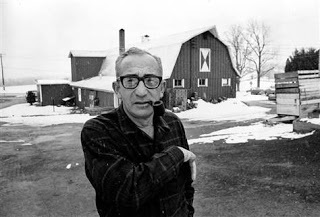 The Beatles, of course, would scrap the Let It Be project and reunite with George Martin for Abbey Road. George would have with that album one of the Beatles' biggest hit with "Something," but what other band, aside from the Beatles, could pass up songs like "All Things Must Pass" and "Isn't It a Pity?" Alongside "Something," though, is a song that is so familiar to us today that we hardly realize anymore that it's in written in 7/2 time. Instead of counting four beats to the measure, one counts seven, a time signature straight out of a progressive rock playbook that wouldn't even be written for another couple years. We've talked about Jim Morrison's influence in The Doors, but rarely do we recognize that The Doors' two biggest hits "Light My Fire" and "Touch Me" from LA woman were both written by Robby Krieger and not by Morrison.
The Beatles, of course, would scrap the Let It Be project and reunite with George Martin for Abbey Road. George would have with that album one of the Beatles' biggest hit with "Something," but what other band, aside from the Beatles, could pass up songs like "All Things Must Pass" and "Isn't It a Pity?" Alongside "Something," though, is a song that is so familiar to us today that we hardly realize anymore that it's in written in 7/2 time. Instead of counting four beats to the measure, one counts seven, a time signature straight out of a progressive rock playbook that wouldn't even be written for another couple years. We've talked about Jim Morrison's influence in The Doors, but rarely do we recognize that The Doors' two biggest hits "Light My Fire" and "Touch Me" from LA woman were both written by Robby Krieger and not by Morrison.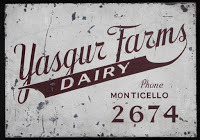 The point is (you were beginning to wonder if there was one), the 60s were winding down. Bands like Led Zeppelin, Yes and Crosby, Stills and Nash would lead us into the 70s, but the 60s had one final victory that would take place in July 1969 with the orchestrated chaos called Woodstock. The plan for Woodstock was nearly as convoluted as that for Let It Be. In Early 1969, Music entrepreneurs Joel Rosenman and John Roberts were creating Media Sound, a state of the art recording studio in Manhattan. In February, Michael Lang, considered the real impetus behind Woodstock, and his partner Arthur Kornfeld approached Roberts and Roseman about funding a similar if smaller studio in the Catskill Mountains near Woodstock New York, the home of Bob Dylan and The Band, among others. Instead, Roberts and Roseman proposed a concert featuring those Catskill artists who found their way to Woodstock. And in January 1969 Woodstock Ventures was formed.
The point is (you were beginning to wonder if there was one), the 60s were winding down. Bands like Led Zeppelin, Yes and Crosby, Stills and Nash would lead us into the 70s, but the 60s had one final victory that would take place in July 1969 with the orchestrated chaos called Woodstock. The plan for Woodstock was nearly as convoluted as that for Let It Be. In Early 1969, Music entrepreneurs Joel Rosenman and John Roberts were creating Media Sound, a state of the art recording studio in Manhattan. In February, Michael Lang, considered the real impetus behind Woodstock, and his partner Arthur Kornfeld approached Roberts and Roseman about funding a similar if smaller studio in the Catskill Mountains near Woodstock New York, the home of Bob Dylan and The Band, among others. Instead, Roberts and Roseman proposed a concert featuring those Catskill artists who found their way to Woodstock. And in January 1969 Woodstock Ventures was formed. At this point in time, no one knew what Woodstock would become, indeed Lang and Kornfeld couldn't find anyone who wanted to participate until in April 1969. Creedence Clearwater Revival became the first to sign on, agreeing to play for $10,000, the equivalent today of approximately $100,000. Their signing led to interest by a myriad of others from unknowns like Joe Cocker to superstars like Hendrix. Interestingly, an event that would be attended by some 500,000, the half-million-strong, was a muddy mess from beginning to end. Indeed, the concert didn't even take place in Woodstock but 50 miles away on Yasgur's farm in Bethel Woods, New York.
Published on March 07, 2019 11:58
March 4, 2019
Peter Tork
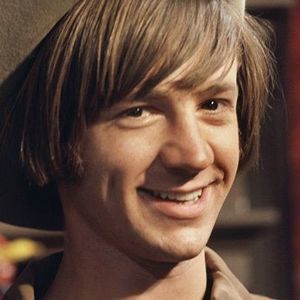 Peter Tork, longtime bassist for the "Pre-Fab Four" died Feb. 21, 2019 at 77. The made-for-TV pop group began in the 1960s and had a long list of hits over the years, most recently with our favorite hit of 2016, "Me and Magdalena," written by Ben Gibbard of Death Cab For Cuties.
Peter Tork, longtime bassist for the "Pre-Fab Four" died Feb. 21, 2019 at 77. The made-for-TV pop group began in the 1960s and had a long list of hits over the years, most recently with our favorite hit of 2016, "Me and Magdalena," written by Ben Gibbard of Death Cab For Cuties. "It is with beyond-heavy and broken hearts that we share the devastating news that our friend, mentor, teacher, and amazing soul, Peter Tork, has passed from this world," reads a post on Peter's Facebook page. "We ask for your kindness and understanding in allowing us to grieve this huge loss privately."They say not to meet your heroes, but I met Peter on two occasions, once when I was eight years old. My brother was in the Studio City Christmas Parade and I sat outside Sambo's Pancakes on Ventura Blvd. to watch. I looked up to see Mickey Dolenz standing by the streetlight not a foot away. He turned, said hello and Peter sauntered up, put his arm around Mickey and said, "Hey, Big Guy." Funny how we remember such moments. When I met him again, years later at a party thrown by the LA Weekly, we talked for a moment, I said, "We met once before" and reminded him of that night in front of Sambo's. He said, "Oh yeah, I remember," with a big Peter grin. Of course, he didn't, but that was who he was. I'll never be able to listen to "Shades of Gray" again without a tear in my eyes. And it’s not just me:
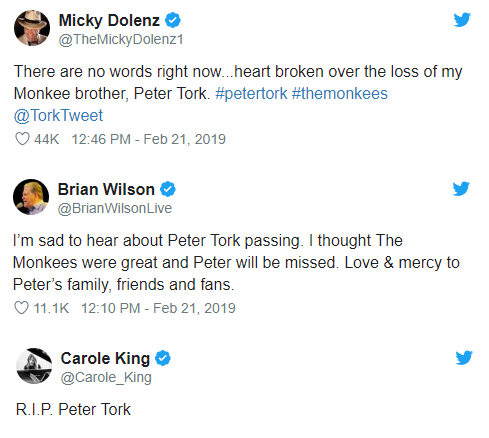
Published on March 04, 2019 06:06
A humble apology...
Over the past few months, AM has tried to keep up with an ever-increasing schedule that also includes the publication of R.J. Stowell's new novel about Woodstock, Miles from Nowhere and the radio spot on Daybreak USA and on iHeart Radio. And so we apologize for the lack of posts and hope to make up for it. We will be revamping the site and provide links so that you can get Miles From Nowhere when it's released on March 12. In the meantime, join us each day for new posts and updates, and don't forget to check us out on the radio. Oh, and here's a sneak peek of Miles' cover.
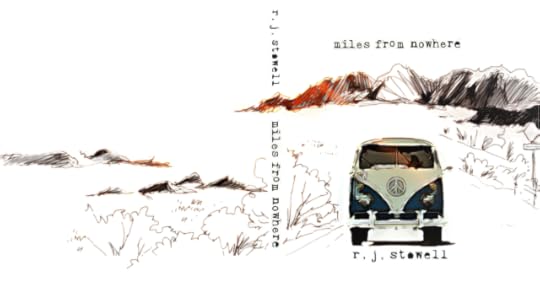

Published on March 04, 2019 05:25
February 24, 2019
1976 - Ventura Highway in the Sunshine
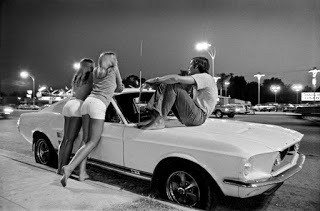
It was like everyone had a drug of choice: Blackpool was a pothead, so were the Quilps; Belinda Pocket loved her Quaaludes; Max Ten was real spiritual and high on life and all, but he was reading Carlos Castañeda and spent the month of November experimenting with peyote buttons and mushrooms and mescaline. By mid-November he'd become a Yaqui man of knowledge and could trip by conjuring up the shaman. Max Ten was just a cool guy.
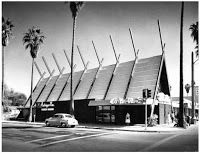 For my birthday, the Yaqui man of knowledge invited the in-crowd to his house so we could trip together. The house was right off Van Nuys Blvd. behind the Coffee Dan's. His parents were out of town and we had the spread to ourselves. No pot, he said, between the neighbors and the stink; he wanted everyone to experience the same high, so he secured ten doses of mescaline: Stephen Blackpool, the Quilps, Sally Brass, Peter Magnus, Willie Macawber, Belinda Pocket, Paigeboy, Max and me: makes ten.
For my birthday, the Yaqui man of knowledge invited the in-crowd to his house so we could trip together. The house was right off Van Nuys Blvd. behind the Coffee Dan's. His parents were out of town and we had the spread to ourselves. No pot, he said, between the neighbors and the stink; he wanted everyone to experience the same high, so he secured ten doses of mescaline: Stephen Blackpool, the Quilps, Sally Brass, Peter Magnus, Willie Macawber, Belinda Pocket, Paigeboy, Max and me: makes ten.Blackpool wasn't happy about the no pot rule.
I'm kind of domestic and Max Ten was a showman. I made salsa from what was left in the garden and a seven layer bean dip. I made taquitos, which were easy, and some other nice Mexican style finger foods. We got Mexican sodas from the Mercado on Victory Blvd. in different flavors like tamarindo and lime and Mexican cola, real colorful in a big tin bucket filled with ice. His parents had Fiestaware and his mother collected Day of the Dead skulls, so it was real festive overall.
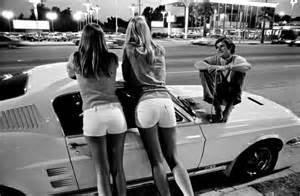 Max prepared by carefully selecting the albums he'd guide us through as our Shaman, and he put away all the others, the ones that didn't make sense to him. Mescaline was more of an acoustic thing, he said. He left out America because he wanted everyone to experience "Ventura Highway" when we were peaking. He put Workingman's Deadand Pure Prairie League and New Riders of the Purple Sage in a stack with a kind of bluegrass/country vibe. After "Ventura Highway," as we all coasted down into our dreams, he'd pick out something from a spacey stack, maybe Pink Floyd's Wish You Were Hear or Traffic. Paigeboy vacuumed and Windexed the sliders looking out onto the pool, then she helped me to cut up peppers and onions. The house looked real festive. We turned the pool heater up high and steam billowed off the surface into the cool November night.
Max prepared by carefully selecting the albums he'd guide us through as our Shaman, and he put away all the others, the ones that didn't make sense to him. Mescaline was more of an acoustic thing, he said. He left out America because he wanted everyone to experience "Ventura Highway" when we were peaking. He put Workingman's Deadand Pure Prairie League and New Riders of the Purple Sage in a stack with a kind of bluegrass/country vibe. After "Ventura Highway," as we all coasted down into our dreams, he'd pick out something from a spacey stack, maybe Pink Floyd's Wish You Were Hear or Traffic. Paigeboy vacuumed and Windexed the sliders looking out onto the pool, then she helped me to cut up peppers and onions. The house looked real festive. We turned the pool heater up high and steam billowed off the surface into the cool November night.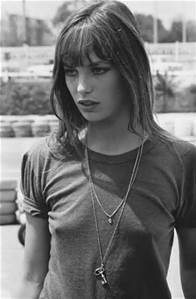 Belinda Pocket was the first to arrive. She had on denim short shorts and a skimpy t-shirt and platform shoes with cork soles. She looked real sexy. The Quilps came with Blackpool, of course he had his guitar. Peter Magnus and Sally Brass were late. Willie Macawber called. He got popped. His mother found a roach clip in his jeans pocket and he couldn’t come.
Belinda Pocket was the first to arrive. She had on denim short shorts and a skimpy t-shirt and platform shoes with cork soles. She looked real sexy. The Quilps came with Blackpool, of course he had his guitar. Peter Magnus and Sally Brass were late. Willie Macawber called. He got popped. His mother found a roach clip in his jeans pocket and he couldn’t come.All in all it was a great success. People couldn't get over my taquitos and salsa. People appreciate the little details. They liked the Jarritos sodas we got, except the tamarindo; only Blackpool liked the tamarindo. The party had continuity. It had style and a theme: Mexican food and a Yaqui way of knowledge. Max Ten guided us through like he really was a shaman. He spelled it all out for us. He said, "You’re gonna want to throw up. Mescaline’s like that; but you can’t throw up. First of all, I don’t want anybody throwing up on the carpet. More importantly, if you throw up, you won't have the same experience. You gotta keep it down for half an hour. Have something to eat. Have another bottle of soda. Trust me, it's not the food making you sick. You’ll be fine. Tough it out." The only one to throw up was Blackpool, but he'd made it through an hour, so the mescaline had already made it into his bloodstream. And he had the decorum to make it into the bathroom. He drove that bus for half an hour, then he seemed fine.
We listened to all this great music, and I'd never heard music like that before. You could hear every lick, every arpeggio. You could hear the squeak of sweaty fingers on guitar strings. There were things in that music that I knew were there but never experienced before, and Max Ten was spot on about "Ventura Highway." That guitar was slick. Chewin' on a piece of grass, walking down the road.
I was back in Arizona with my father, but it was colorful and different. Imagine realizing there's a shade of orange that's blue; imagine if you will a field of gold blowing in the breeze like a sea of grain. My mother and father came up out of that vast ocean holding hands; my father chewin' on a piece of grass. It was bright, white, alligator lizards in the air.
And then the beautiful guitar.
And then sweet pictures and sleep.
Published on February 24, 2019 07:12
February 11, 2019
The Apple Doesn't Fall Far...
In its September 21, 1971 issue, the weekly magazine Life presented an article on rock stars and their parents; among them Elton John, David Crosby, Grace Slick and the most colorful, Frank Zappa, and his parents Francis and Rosemarie (and a cat). Indeed, the Zappa doesn't fall far from the tree.
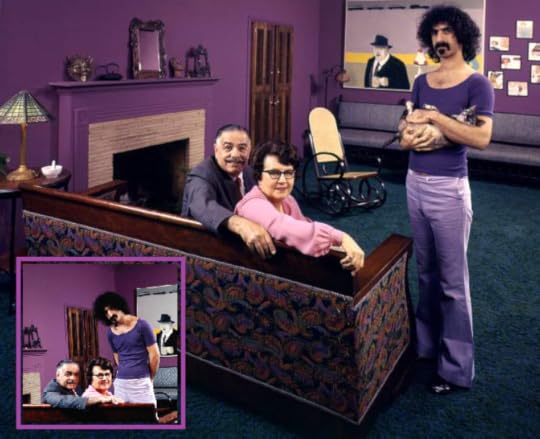

Published on February 11, 2019 06:24



